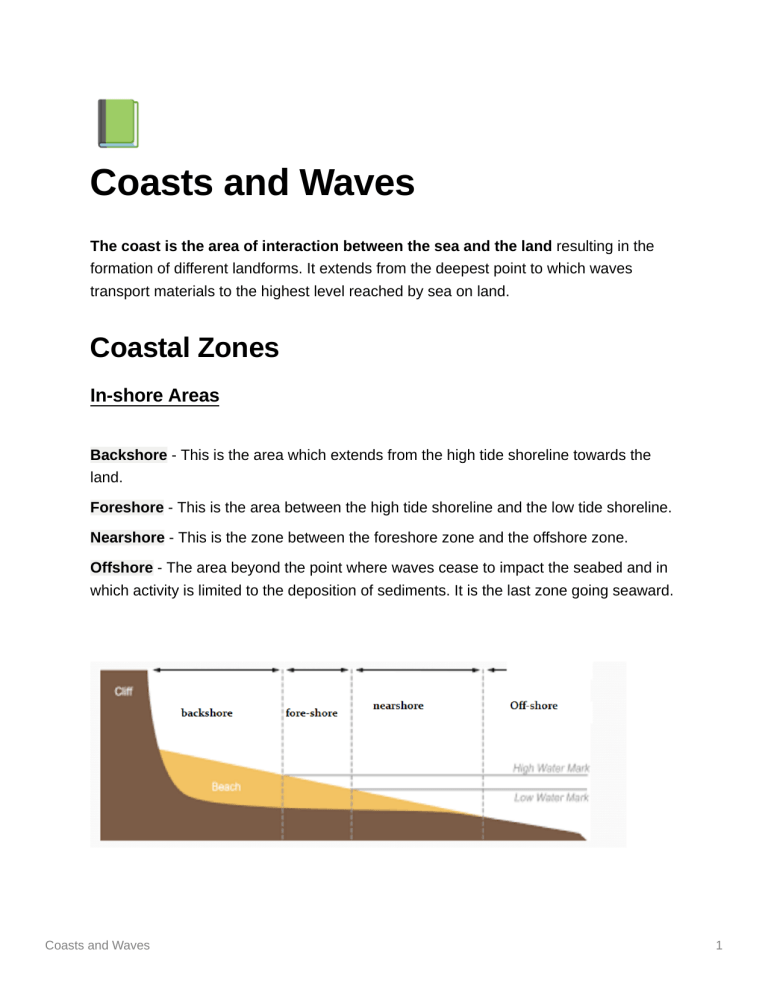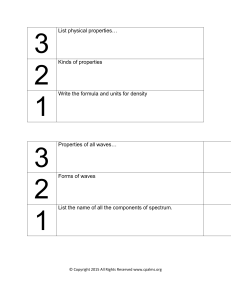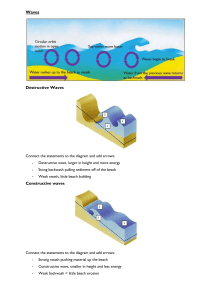
📗 Coasts and Waves The coast is the area of interaction between the sea and the land resulting in the formation of different landforms. It extends from the deepest point to which waves transport materials to the highest level reached by sea on land. Coastal Zones In-shore Areas Backshore - This is the area which extends from the high tide shoreline towards the land. Foreshore - This is the area between the high tide shoreline and the low tide shoreline. Nearshore - This is the zone between the foreshore zone and the offshore zone. Offshore - The area beyond the point where waves cease to impact the seabed and in which activity is limited to the deposition of sediments. It is the last zone going seaward. Coasts and Waves 1 Off-Shore Areas Continental Shelf - The portion of a continent (land mass) that is submerged under an area of relatively shallow water. Continental Slope - The slope between the outer edge of the continental shelf and the ocean floor. Why live near the coast? The temperature is cooler The land is more flat, easier for buildings The land has alluvial soil, it is more fertile The ease of recreational activities taking place It is more convenient for fishermen. Waves A wave is a disturbance on the surface of the sea/ocean created by the increased friction as the wind blows over it. Waves possess energy and acts as an agents of erosion. Similar to other agents of erosion (wind, water, ice) coastal waves erode, transports and deposits. Waves break when they enter shallow water. Coasts and Waves 2 ➜ N.B: Waves may also be formed when an earthquake shakes the sea bed. These waves are called tsunamis. Features of a Wave Other Vocabulary Crest Swash The highest point of a wave The lowest point of a wave This is when surf runs up the beach. The swash takes a cloud of sand particles and even small stones up the beach with it. Wave Height Backwash The distance between a crest and a trough This is when the water starts to flow back down the beach. It drags Wave Length sediment from the beach back into the water. Trough The distance between two successive crests of the wave Wave Speed How fast or slow the wave is moving at a given period Wave Period The time taken for a wave to travel through one wavelength Coasts and Waves Low Wave Frequency This is when a small amount of waves are breaking every minute. Example, 6-8 wpm High Wave Frequency This is when a large amount of waves are breaking every minute. Example, 10-14 wpm 3 The strength of a wave is determined by three factors: Wind speed/velocity The period of time during which the wind is blowing The fetch (the maximum distance of open water over which the wind can blow) N.B: The longer the fetch the larger the wave, and the faster the wind speed the larger the wave. Types of Waves There are two types of waves: Constructive Waves These are waves that build the coastline/landforms (eg, beach) Destructive Waves These are waves that build/carve the coastline/landforms by eroding them (eg, cliff) N.B: With a constructive wave, the swash is stronger than the backwash— they deposit material unto the coast. With a destructive wave, the backwash is stronger than the swash— they erode the coast. Difference between Constructive Waves and Destructive Waves Constructive Waves Destructive Waves Usually low/small Usually high/large Has a long wavelength (up to 100 cm) Has a short wave length (perhaps 20 cm) Has a low frequency (6 to 8 per minute) Has a high frequency (10 to 14 per minute) Spills over gently when breaking and is not very erosive Plunges over when breaking with strong erosive force Weak backwash which allows for the deposition of sediments Powerful backwash which which can move a lot of sediments don the beach Coasts and Waves 4 Common on gently sloping coast Coasts and Waves Common on steep coastal slope 5




